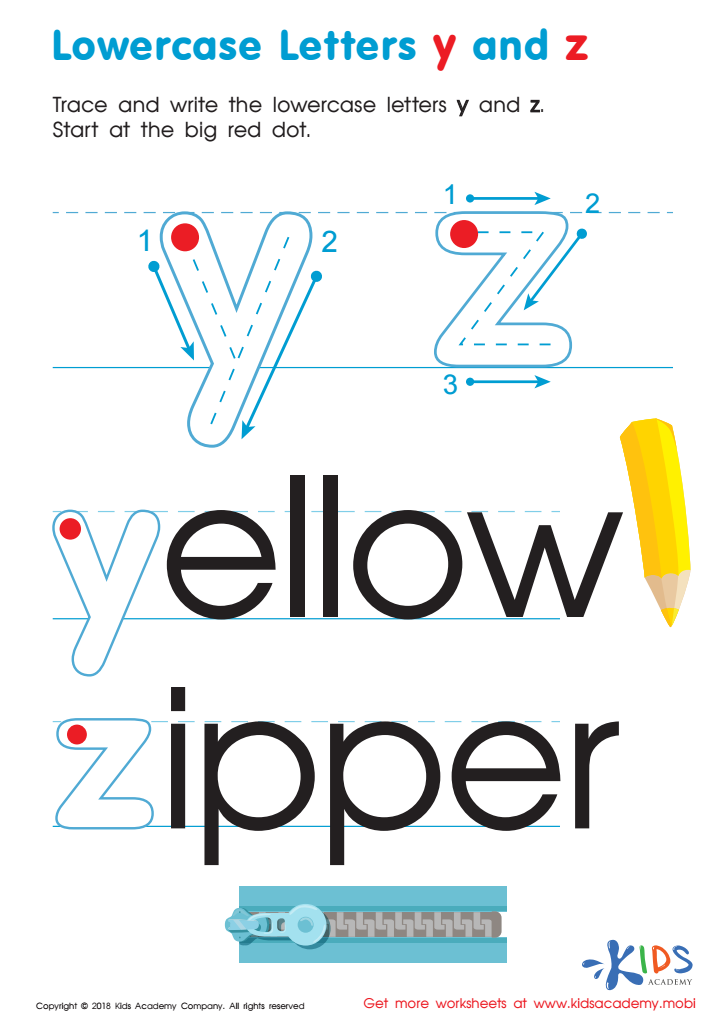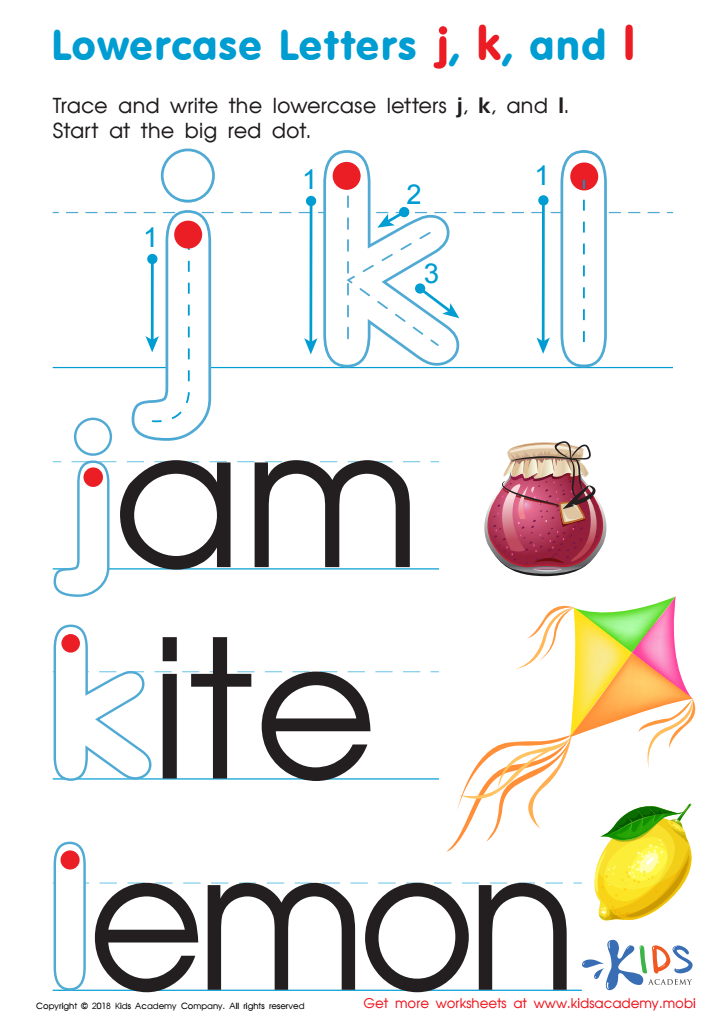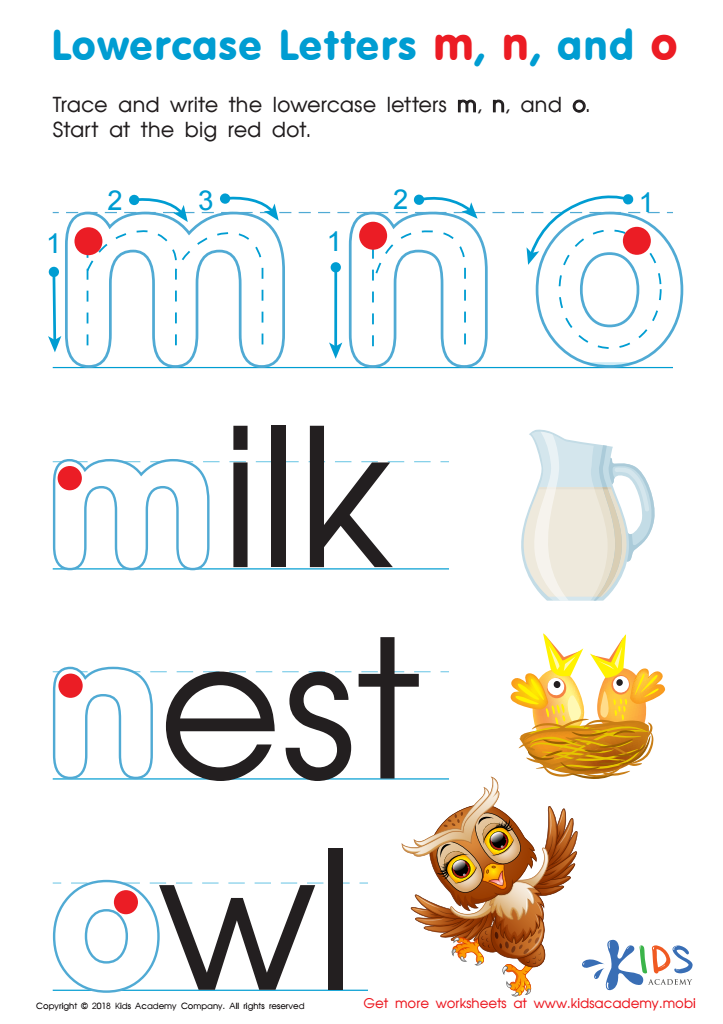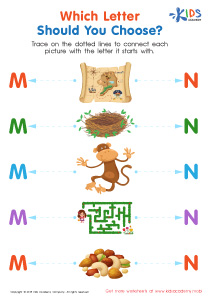Lowercase letter writing Normal Lowercase/Small Letters Worksheets for Ages 4-8
3 filtered results
-
From - To
Introduce your young learners to the world of writing with our Lowercase Letter Writing Worksheets, specially designed for children ages 4-8. These engaging printables focus on normal lowercase letter formation, ensuring your child develops essential writing skills. Each worksheet offers various activities featuring tracing, writing, and identifying lower case letters in a fun and interactive way. Perfect for both classroom and at-home learning, our worksheets pave the path for future writing success. Support your child’s educational journey and build a strong foundation with our expertly crafted lowercase letter worksheets! Download today and make learning an enjoyable adventure!


Lowercase Letters y z Worksheet


Lowercase Letters j k l Worksheet


Lowercase Letters m n o Worksheet
Parents and teachers should care about lowercase letter writing for children aged 4-8 because it forms the foundation for effective communication and literacy development. During these formative years, children are acquiring essential fine motor skills and cognitive abilities that are critical for writing. Learning to write lowercase letters helps refine finger muscle coordination, boosts dexterity, and improves overall handwriting quality.
Lowercase letter writing is also vital for reading fluency. Most text in books, signs, and everyday reading materials appears in lowercase letters, so recognizing and writing them correctly is crucial for children's reading comprehension and speed. Mastering lowercase letters can enhance children’s confidence and enjoyment of reading, making them more likely to engage in further literacy activities.
Additionally, proficiency in lowercase writing also promotes accurate spelling and word formation. Students who can seamlessly transition between uppercase and lowercase use are better prepared for written communication, which improves their academic performance across subjects.
Moreover, these formative experiences in handwriting practice can foster a sense of accomplishment and instill lifelong learning habits. By prioritizing lowercase letter writing, parents and teachers set the stage for children to become competent, confident readers and writers, significantly influencing their future educational success and literacy.

 Assign to My Students
Assign to My Students










